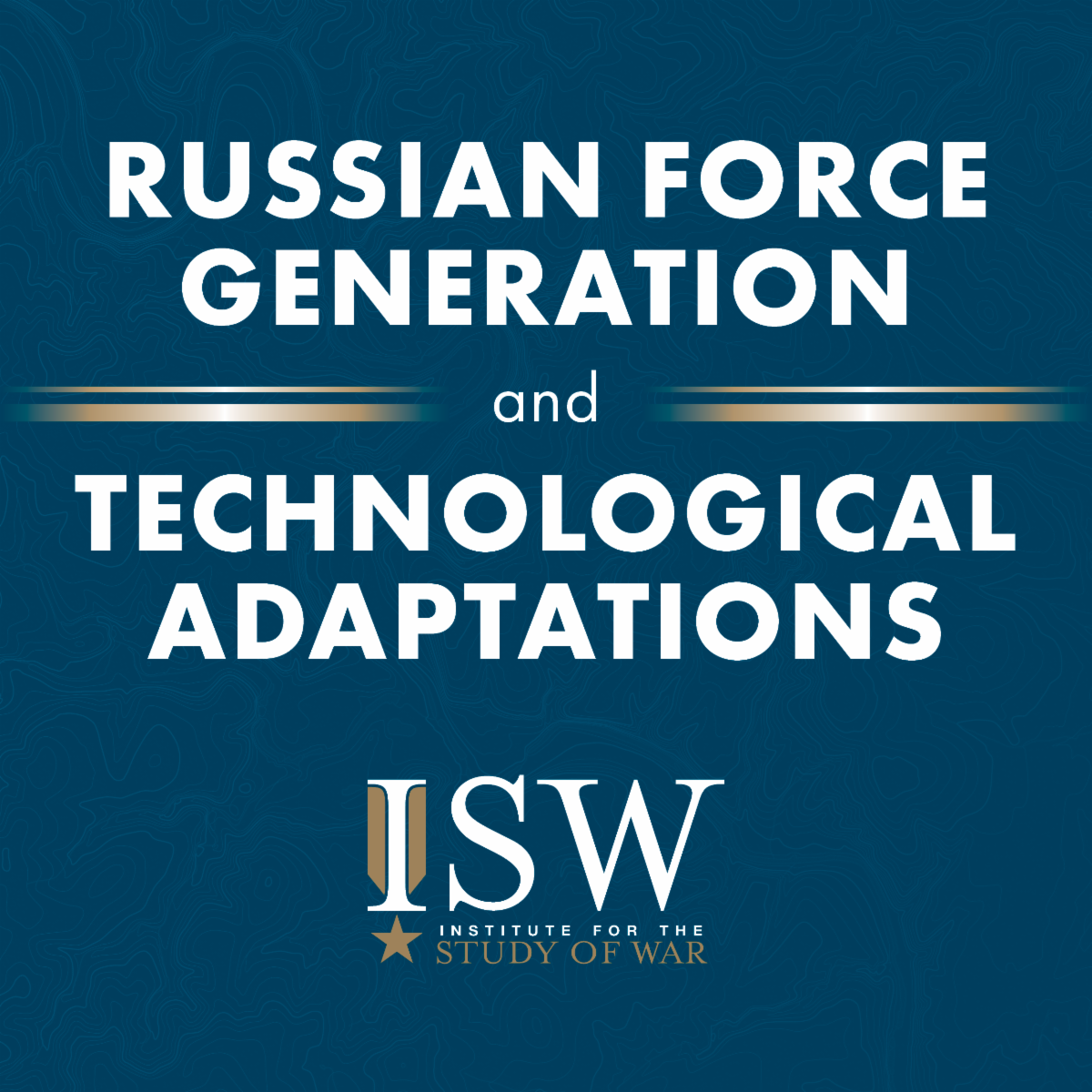Russian recruiters continue to offer Russian recruits low-quality and ineffective military training before deploying them to Ukraine. A Russian military observer visited a Moscow Military District (MMD) training center and reported on May 18 that Russian contract servicemen undergo only a week-long basic military training and spend another two weeks in training centers in occupied Ukraine. The observer stated that Russian instructors have limited combat knowledge and cannot adequately prepare servicemen for war. The observer stated that Russian recruits train in small groups of four to five men due to the continuous threat of Ukrainian drones and Russia's inability to establish tactical air superiority. The observer stated that Russian military commanders expect recruits to know how to operate machine guns and mortars, conduct successful assaults on Ukrainian positions, recognize minefields, learn tactical medicine techniques, and familiarize themselves with radio communications. The observer stated that recruits would realistically need at least seven days to learn how to use one weapon and at least four days to learn engineering and assault techniques.
The Russian Ministry of Defense (MoD) and its Main Directorate of Combat Training have not reprioritized improving military training since at least 2024. Russian milbloggers similarly observed in 2024 that recruits received 14 to 16 days of training, of which only four or five days constituted real training. Russian milbloggers also observed in December 2024 that Russian Defense Minister Andrei Belousov did not issue a decree formalizing training requirements and timeframes, meaning that Russian tactical training levels depend on whether a given unit received orders from operational-level groupings of forces (GOFs) commands.
The Russian defense industrial base (DIB) is reportedly not producing sufficient military equipment for recruit training. The observer stated that Russian training grounds lack military equipment for training purposes, such as machine guns and sights for grenade launchers. The observer attributed these equipment shortages to bureaucratic bottlenecks that emerged because the Russian MoD has failed to conclude long-term contracts with weapon manufacturers. The observer noted that Russian manufacturers are unwilling to risk scaling up their weapon production before obtaining contracts and implied that Russia's high interest rate of 21 percent is further impeding independent weapon production initiatives. The observer highlighted that the Russian 333rd Training Center in Mulino, Nizhny Novgorod, does not have a streamlined training methodology or competent instructors. The observer added that a Russian colonel stated several times during the visit that recruits “don’t need to be taught anything special" and that "if these [recruits] run out, [the military command] will send others.” The observer claimed that Russian units have serious shortages of electronic warfare (EW) and signals intelligence (SIGINT) capabilities at the company level.
Russian recruits appear to be suffering significant casualties because of poor training, equipment shortages, and systematic misuse of assault units in combat. A former Storm-Z instructor and milblogger claimed on April 13 that poor training of recruits is limiting Russia's ability to conduct any other operations aside from "meat" assaults and that Russia is suffering high losses because the Russian military command does not have sufficient time to properly train recruits. The Storm Z instructor also noted that Russian forces lack training for drone specialists and that the Russian military command is misusing such specialists as infantry. Another milblogger complained that the Russian military’s commitment of junior officers and military specialists to assaults is reducing Russia's training capacity and is eliminating junior Russian command staff. The Russian milblogger observed that Russian military doctrine reserves assault operations for highly experienced personnel, as assault units often have to seize important infrastructure such as airports and military bases. The milblogger implied that poor training and ineffective military leadership diluted the function of assault units and degraded the appeal of service in specialized assault units.
Key Takeaways:
Russian Mobilization and Force Generation Efforts
- Russian recruiters continue to offer Russian recruits low-quality and ineffective military training before deploying them to Ukraine.
Russian Force Centralization
- Russian officials indicated their intent to severely limit independent crowdfunding efforts as part of an ongoing force centralization campaign, an effort that may negatively impact Russia's organic crowdfunding efforts that emerged in response to the Russian war in Ukraine.
Integration of Veterans into Russian Society
- Russian President Vladimir Putin may be setting information conditions to extend combat veteran statuses to the Russian Orthodox Church Moscow Patriarchate (ROC MP) clergy who participated in Russia's full-scale invasion of Ukraine in apparent violation of world Orthodox canons.
- The Kremlin and high-ranking regional officials are using veteran appointments as a way to conduct a large-scale purge of Russian officials and businessmen who do not align with the Kremlin's pro-war and ultranationalist objectives.
Militarization of Society and Youth
- Russian officials approved a textbook that will teach 8th and 9th-grade schoolchildren to operate drones.
Russian Command Changes and Chain of Command
- The Russian high military command reportedly removed a popular commander of an assault battalion fighting in southwestern Donetsk Oblast, sparking outrage among Russian servicemen and ultranationalists.
Russian Defense Industrial Base
- The Russian Defense Industrial Base (DIB) continues to scale up the modernization of optical systems and increase missile production amid ongoing sanctions, persistent quality issues, and manufacturing delays.
Russian Technological Adaptations
- Ukrainian officials and Russian milbloggers reported that Russian first-person view (FPV) drones armed with rocket-propelled grenade (RPG) warheads can now reach Kharkiv City and can operate over 40 kilometers into the rear.
- The Kremlin is attempting to create a new command and control system to improve interoperability among Russian air, space, and relevant cyberspace domain assets, likely in an effort to improve Russian systems' interoperability and improve Russian defenses against Ukrainian long-range drone attacks.
| 




 [ISW] 러시아의 공세 캠페인 평가, 2025년 5월 30일
[ISW] 러시아의 공세 캠페인 평가, 2025년 5월 30일
 [국방부] 인천·경기·제주·울릉 '6·25 전사자 유가족 집중 찾기' 착수
[국방부] 인천·경기·제주·울릉 '6·25 전사자 유가족 집중 찾기' 착수